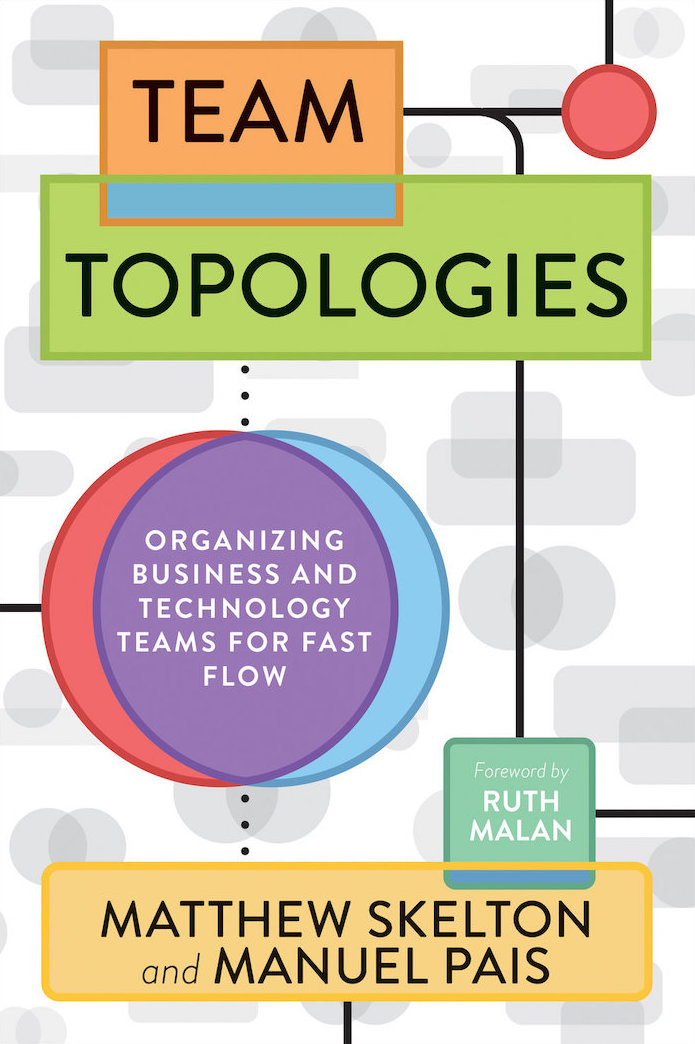Manager Reads - Team Topologies
26 Apr 2020Organizational design has always interested me and thanks to Spotify I finally got a book recommendation so without further ado… In this edition of Manager Reads we cover Team Topologies: Organizing Business and Technology Teams for Fast Flow by Matthew Skelton and Manuel Pais. This is also the first Manager Reads entry featuring a Portuguese author: Olá Manuel! 🇵🇹
Who recommended the book? Several months back I read the Spotify white paper on Scaling Agile @ Spotify with Tribes, Squads, Chapters & Guilds. A recent blog post by Jeremiah Lee, who worked at Spotify in 2017, highlighted the failure of the Spotify organizational model: Failed #SquadGoals - Spotify doesn’t use “the Spotify model” and neither should you. In this post, Lee recommends reading Team Topologies for more information on the Spotify model. Lee also has great taste in books as his post includes a quote from one of my favorite Manager Reads books: Turn the Ship Around!

Judge the book by its cover, font, page quality? Team Topologies is a well-designed book inside and out. The cover features the shapes, lines, and colors used inside the book to describe different organizational models. The inside really shines too. The book is divided into three parts and each part has a designated color. The chapter markers along the edge of the pages, the occasional tips and notes highlighted, and chapter numbers all use this designated color. Everything is really cleanly laid out; you can tell the authors invested energy in making this book look great to get high marks in this Judge a Book by Its Cover section of Manager Reads! 😁
Thoughts on the book and the big take-aways? Team Topologies is broken up into three parts that cover:
- Teams As the Means of Delivery - This is the theory section of the book and covers things like Conway’s law which states that the architecture of solutions built will mirror the communication structures of organizations; cognitive load and the importance of keeping this load low; and how we should view teams, not individuals, as the most effective means of software delivery.
- Team Topologies that Work for Flow - This section covers the four fundamental team types: stream-aligned, platform, complicated subsystem, and enabling. The majority of teams in an organization should be stream-aligned and the focus of other teams should be on empowering stream-aligned teams. A stream-aligned team focuses on a continuous flow (the stream in stream-aligned is to emphasize the importance of flow) of work that is aligned to a business domain. When considering domains for teams this section also covers fracture planes; these are natural seams in software systems that allow splitting into logical subcomponents that can be owned by a single team.
- Evolving Team Interactions for Innovation and Rapidly Delivery - This last section covers the three types of interactions the four fundamental team types can have with each other: collaboration, X-as-a-Service, and facilitating. Depending on the situation different interactions may work best as there are advantages and disadvantages to the three interactions.
Four team types and three interaction types sounds small but thinking about Twitch’s organizational design most teams and their interactions with other teams fit somewhat cleanly into this model. I can also attest to the advantages and disadvantages of the interactions having seen and experienced them myself!
The one thing I wish Team Topologies would provide is a longer-lived case study for an organization. There are smaller case studies sprinkled throughout the book but walking away from the book none of them really stuck with me because they left a very shallow impression. It would’ve been great to have a recurring case study focused on a single organization that was revisited throughout the book as we learned new concepts and principles.
Favorite quote from the book? “‘Minimize cognitive load for others’ is one of the most useful heuristics for good software development.”
Elevator pitch for suggesting (or not suggesting) the book? Team Topologies serves as both a primer to organizational design and presentation of what it believes is a good organizational model to optimize for getting things done. It’s a nice mix for those looking for a mix of theory and practical applications of organizational design. As far as this is the first book I’ve read on organizational design, I liked it and recommend it.
Notes in Evernote? Check out my notes on 🐘.
Most of the world’s wisdom is written down in its best books. Manager Reads is a series covering books on management and leadership, focusing on books that can improve your own leadership with the wisdom of others. Enjoyed this post and want to see more? Check out more at Manager Reads.